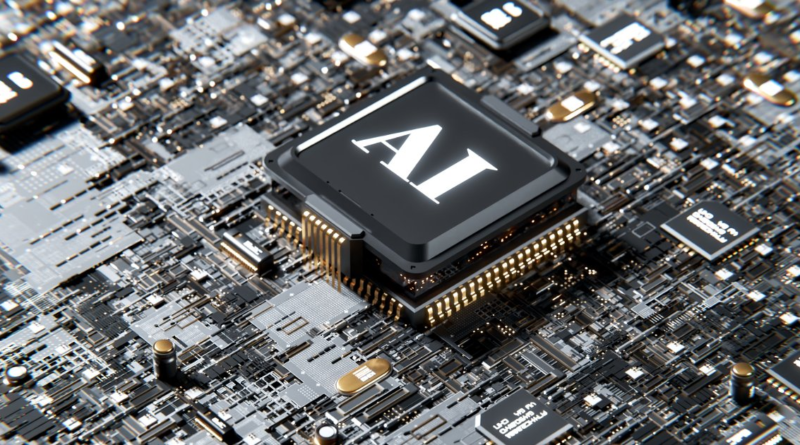Revolutionizing Chip Design With AI – INDIAai
Back
Results for ""
Follow IndiaAI
Contribute
Contact Us
Home
Share on Twitter
Share on Facebook
Share on LinkedIn
Using AI, electronic design automation tools can significantly enhance power efficiency, performance, and chip area—the holy grail of PPA. AI can also automate various chip design tasks. For example, AI can generate more optimal layouts for integrated circuits, reducing the chip designer’s time and effort required for this process.
The semiconductor industry, often called the brain of modern technology, is undergoing a significant transformation. With the continuous evolution of chip architecture and ongoing technological advancements, the race for smaller and more efficient chips is pushing traditional design and verification techniques to their limits, rendering semiconductor design more complex than ever.
Amidst this transformation, artificial intelligence is fast revolutionizing our world as we know it, playing a key role in helping design engineers tackle chip design challenges with better results and greater efficiency. Using AI, electronic design automation tools can significantly enhance power efficiency, performance, and chip area—the holy grail of PPA. AI can also automate various chip design tasks. For example, AI can generate more optimal layouts for integrated circuits, reducing the chip designer’s time and effort required for this process.
Another area where AI can help is workforce augmentation. The increase in demand for electronics, and therefore, semiconductor chips, requires a skilled workforce, and there is clearly a dearth of skilled and experienced designers today. Here, AI tools can help bridge the workforce gap by automating aspects of highly repetitive tasks or relying on extensive prior knowledge, allowing designers to focus on the more complex challenge of differentiation.
Using AI in chip design involves deploying machine learning and optimization algorithms to navigate the design space, creating more efficient and compact chip layouts. The AI process begins with the comprehensive collection of data related to chip design, encompassing historical designs, performance metrics, power consumption, and manufacturing parameters. Machine learning models, such as neural networks, are trained using pre-processed data.
Engineers and data scientists develop AI algorithms that leverage these trained models for specific chip design tasks. Integrating AI tools into existing chip design software ensures accessibility for engineers and designers, helping them incorporate AI-driven insights and recommendations.
Importantly, AI helps with augmentation—it improves the designer’s productivity. It cannot replace the deep engineering human expertise required for specific analysis or solving complex problems. Chip designers work collaboratively with AI algorithms, using the generated insights to make informed decisions and refine chip designs collaboratively.
AI and sustainability in the semiconductor industry are multi-faceted and complex topics. This article will briefly discuss three aspects: sustainability at the chip level, the system level, and the impact of datacenter energy consumption.
We have already discussed AI’s ability to increase PPA efficiencies at the chip and board level. On the verification side, AI can enable same-size designs to be verified with less power or bigger designs to be verified in the same power consumption envelope. It can help with layout automation on PCBs with AI-based system design technologies.
To make the next leap, we need to take a systems view of sustainable design. Ultimately, sustainability is measured at the end-user application—the system—and here, thermal is one of the biggest system-level issues today. Each component can be optimized for energy consumption or other sustainability aspects. The components on a system are interconnected, and different system requirements can transform different component requirements. Energy is transformed into function and heat, and managing thermal effects is the best example of a system-level issue. Semiconductor companies must approach these system issues holistically and at the component level.
The other aspect of AI and sustainability is energy consumption by datacenters. AI models require massive amounts of energy to run. This article in Scientific American cites peer-reviewed research in the journal Joule, which claims that running 1.5 million of just one type of server at full capacity for AI applications could use “at least 85.4 terawatt hours of electricity annually—more than what several small countries use in a year.” It gives the phrase “power of AI” a whole different meaning!
Like many path-breaking technologies, AI has both positive and negative consequences. However, as the industry continues to evolve, the perception of AI has shifted from being a niche area to becoming a driving force at the forefront of innovation and disruption. It’s no longer just a means to an end; it has become a catalyst for transformation, significantly impacting efficiency and productivity and enhancing competitiveness. It even fosters innovation by helping designers become more productive and providing paths to explore new advancements. Incorporating AI into chip design is not merely a choice; it’s a strategic imperative in this highly competitive business.
AI holds immense potential to revolutionize chip design, and we are just beginning this journey. The integration of generative AI promises a new era of unprecedented advancements and innovation in the field of semiconductors. It is a game-changer, steering these technologies towards new and exciting frontiers.
Photo by Igor Omilaev on Unsplash
Publish an article and share your insights to the world.
The information provided on this page has been procured through secondary sources. In case you would like to suggest any update, please write to us at [email protected]
indiaai.gov.in
Twitter
Facebook
LinkedIn
Join our newsletter to know about important developments in AI space
